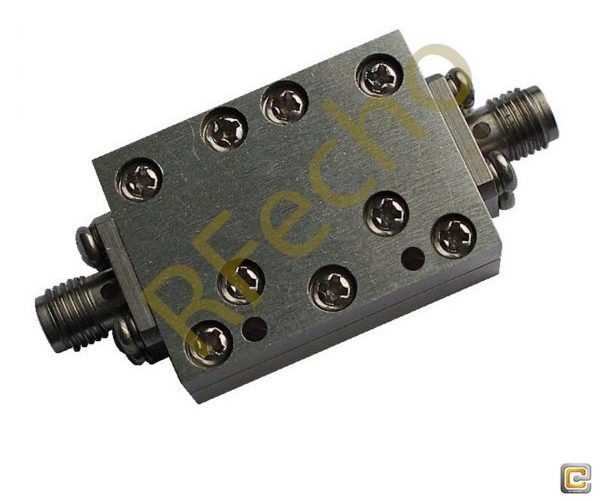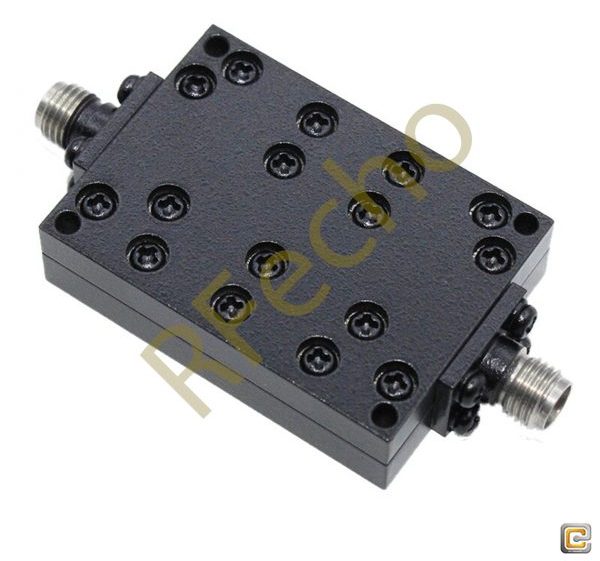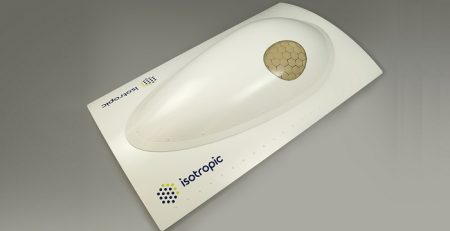Distinct Characteristics of Low-Pass Filter and High-Pass Filter in Circuits
 Overview of Filters in Signal Processing
Overview of Filters in Signal Processing
Definitions and Basic Concepts
Filters in signal processing are fundamental tools designed to manipulate the frequency components of signals. They shape the signal in a desired manner by allowing certain frequencies to pass at the same time attenuating others. A low-pass filter permits low frequencies to pass through and attenuates high frequencies, while a high-pass filter does the opposite, allowing high frequencies to pass and attenuating low frequencies.
Role of Filters in Signal Processing
For instance, in audio processing, filters can shape sounds to enhance clarity and quality by removing unwanted frequencies. In communication systems, they are essential for channel separation, reducing interference, and optimizing bandwidth usage. Filters are also used in various other fields, showcasing their versatility and importance.
Key Parameters of Filters
When designing and implementing filters, several key parameters must be considered. These include the cutoff frequency, which defines the threshold at which the filter starts to attenuate unwanted frequencies, and the slope or roll-off rate, which determines how quickly the attenuation occurs beyond the cutoff frequency. The quality factor, or Q factor, represents the selectivity of the filter, indicating how sharp the transition is between passed and attenuated frequencies. Lastly, the filter type (analog or digital) dictates the implementation medium, each having its own set of advantages and constraints.
 Low-Pass Filter Explained
Low-Pass Filter Explained
Definition and Functionality
A low-pass filter (LPF) is a type of filter that allows low-frequency signals to pass through while attenuating frequencies above a specified cutoff point. In essence, it “smooths” a signal by removing rapid changes or high-frequency noise.
How It Works: Filtering Out High Frequencies
In practical terms, a low-pass filter attenuates the amplitude of high-frequency components in a signal. When high-frequency signals encounter the filter, they are significantly reduced in amplitude, essentially being “filtered out.” The resulting output signal maintains its lower frequency characteristics, cleaned of unwanted high-frequency noise, which is particularly useful in audio and communication applications.
Applications in Audio and Communication Systems
Low-pass filters are wildly used in both audio and communication systems. In audio systems, Low-pass filters are used to counteract high-frequency noise and focus on the essential lower frequencies, so that the overall sound quality can be improved. In communication systems, LPFs help in demodulating signals, they help isolating the required frequency bands, and they could also reduce cross-channel interference. They are also crucial for data acquisition systems, they can smooth out high-frequency noise from sensors, ensuring the captured data is clean and reliable.
Design Considerations
Designing a low-pass filter requires careful consideration of various factors to ensure optimal performance for the intended application.
Common Circuit Designs
Common circuit designs for low-pass filters include the simple RC (resistor-capacitor) filter and more complex configurations such as Butterworth, Chebyshev, and Bessel filters. The RC filter is preferred for its simplicity and effectiveness in reducing high-frequency noise in analog circuits. On the other hand, more sophisticated designs like Butterworth filters offer a maximally flat frequency response, while Chebyshev and Bessel filters provide other specific advantages like steeper roll-off rates or better phase characteristics, tailored to the specific application requirements.
Performance Metrics
Key performance metrics for low-pass filters include cutoff frequency, roll-off rate, and phase response. The cutoff frequency determines which frequencies will be attenuated, setting the threshold for filtering high frequencies. The roll-off rate indicates how sharply frequencies are attenuated beyond the cutoff frequency, impacting the filter’s ability to distinguish between closely spaced frequencies. The phase response is also critical, especially in audio and communication applications, as it affects the timing and synchronization of signals passing through the filter. Accurate design and optimization of these parameters are essential for achieving high-performance in low-pass filter applications.
 High-Pass Filter Explained
High-Pass Filter Explained
Definition and Functionality
A high-pass filter (HPF) allows high-frequency signals to pass through while attenuating frequencies below a designated cutoff point. This type of filter removes low-frequency noise and is invaluable in applications where the preservation of high-frequency components is critical. By blocking unwanted low-frequency signals, high-pass filters ensure that only the desired frequencies are processed.
How It Works: Filtering Out Low Frequencies
High-pass filters operate by reducing the amplitude of low-frequency components in a signal. This is typically accomplished using reactive components such as capacitors and inductors in analog circuits. When low-frequency signals encounter the filter, their amplitude is significantly reduced, effectively being “filtered out.” The outcome is a signal that retains its high-frequency components, free from the interference of low-frequency noise. This principle is extensively applied in systems where clarity and precision of high-frequency signals are paramount.
Applications in Audio and Communication Systems
High-pass filters are commonly utilized in both audio and communication systems. In audio applications, they are employed to remove low-frequency rumble and enhance high-frequency clarity, making them essential for sound recording and playback. In communication systems, high-pass filters enable the removal of low-frequency interference and improve signal-to-noise ratios, facilitating clearer and more accurate data transmission. Additionally, they are vital in applications such as EEG and ECG in medical electronics, where they help isolate critical high-frequency components.
Design Considerations
Designing a high-pass filter demands careful attention to various factors to ensure it meets the desired performance criteria for its specific application.
Common Circuit Designs
Common designs for high-pass filters include simple RC (resistor-capacitor) circuits and more complex designs like Sallen-Key and multiple feedback topologies. The RC high-pass filter is often chosen for its simplicity and ability to provide a basic first-order filtering action. More intricate designs such as the Sallen-Key offer second-order filtering, delivering a steeper roll-off rate and better attenuation characteristics, which are ideal for applications requiring more precise filtering.
Performance Metrics
Performance metrics for high-pass filters focus on the cutoff frequency, roll-off rate, and phase response. The cutoff frequency defines the threshold where filtering of low frequencies begins. The roll-off rate is critical as it determines the steepness of attenuation for frequencies below the cutoff. The phase response is particularly important in applications like audio processing, where phase distortion could impact signal integrity. Ensuring these metrics are accurately designed and implemented is crucial for the optimal performance of high-pass filters.
Comparative Analysis: Low-Pass vs. High-Pass Filters
Signal Processing Needs Addressed by Each Filter Type
Low-pass and high-pass filters serve different signal processing requirements. Low-pass filters are essential for applications requiring the retention of low-frequency components and the attenuation of high-frequency noise, such as in audio bass enhancement and data smoothing. Conversely, high-pass filters are critical for scenarios needing the preservation of high-frequency components while eliminating low-frequency interference, such as in treble enhancement in audio systems and reducing power line noise in communication signals.
Frequency Response Characteristics
Cutoff Frequency
The cutoff frequency is a pivotal factor in both low-pass and high-pass filters. It defines the frequency boundary between the passband and the stopband, determining which frequency components will be allowed to pass through the filter. In low-pass filters, the cutoff frequency marks the point above which frequencies are attenuated. For high-pass filters, it is the point below which frequencies are attenuated. Selecting an appropriate cutoff frequency is crucial for achieving the desired filtering effect and ensuring optimal signal integrity.
Slope and Attenuation Rates
The slope or roll-off rate of a filter describes how quickly frequencies are attenuated beyond the cutoff point. This characteristic is governed by the filter’s order, with higher-order filters providing steeper slopes. For low-pass filters, a steeper slope enhances the ability to sharply differentiate between passband and stopband frequencies. High-pass filters benefit similarly from steeper slopes by more effectively attenuating unwanted low-frequency components. Balancing the slope and attenuation rates is critical for achieving the desired signal clarity and quality.
Typical Applications for Each Filter Type
Practical Examples in Engineering and Technology
Low-pass filters are widely used in applications like audio subwoofer design, where they help isolate low-frequency sounds to dedicated speakers. They are also instrumental in signal conditioning for analog-to-digital converters, ensuring that only relevant frequency components are sampled. High-pass filters find use in microphone signal processing to eliminate low-frequency sounds like wind noise. Furthermore, they are employed in biomedical devices to isolate high-frequency signals in ECG and EEG systems, aiding in accurate diagnosis and monitoring.
Advantages and Limitations
Low-pass filters excel in applications requiring noise reduction and signal smoothing, but they might introduce phase distortion in high-frequency components. High-pass filters are advantageous for removing low-frequency noise, yet they can introduce attenuation to lower frequency harmonics that might be useful in certain contexts. Understanding the inherent advantages and limitations of each filter type is essential for making informed design choices and optimizing their application in various technologies.
 RFecho
RFecho
In the grand orchestra of electronics, where circuits hum and buzz in a symphony of signals, RFecho‘s Low-Pass Filter and High-Pass Filter are the maestros. They’re like the Simon Cowell of the electronics world – discerning, precise, and always on the lookout for the next big signal.
Think of RFecho’s Low-Pass Filter as the bouncer at an exclusive club, only letting in the low-frequency VIPs. It’s like the Gandalf of filters, standing firm and declaring, “You shall not pass!” to any high-frequency gatecrashers. It’s the ultimate gatekeeper, ensuring that only the smoothest, most chill low-frequency signals make it to your circuit’s party.
On the other hand, RFecho’s High-Pass Filter is like the cool older sibling, always hanging out with the high-frequency crowd. It’s like the bouncer at a rooftop bar, only letting in the high-frequency elites. It’s the trendsetter, setting the pace for a high-energy, high-frequency rave in your circuit.
Choosing the Right Filter for Your Needs
Assessing Your Requirements
Selecting the appropriate filter type necessitates a thorough understanding of the specific requirements of your application. Assess the frequency characteristics of the signal you need to process and the nature of the noise or unwanted components you aim to eliminate. Determine whether the preservation of low-frequency or high-frequency components is more critical for your use case. This initial assessment will guide your decision-making process and help you choose between a low-pass or a high-pass filter.
Key Decision-Making Criteria
Several criteria should be considered when choosing the right filter. These include the desired cutoff frequency, the required roll-off rate, and the acceptable level of phase distortion. Additionally, the implementation medium (analog or digital) and power consumption constraints may influence your choice. Ensure that the selected filter design meets the performance specifications and adheres to the operational requirements of your system. By carefully evaluating these criteria, you can make an informed decision and implement the most effective filter for your signal processing needs.


 Low-Pass Filter Explained
Low-Pass Filter Explained High-Pass Filter Explained
High-Pass Filter Explained RFecho
RFecho




